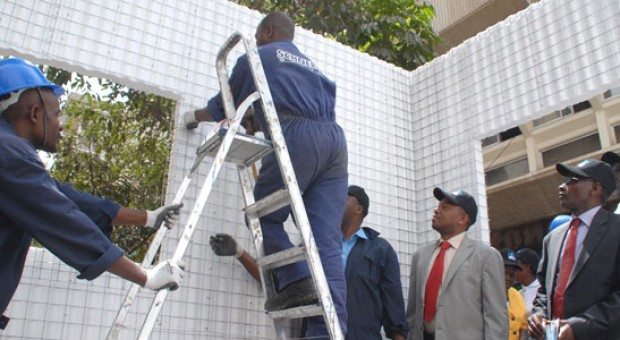Building companies are embracing polystyrene construction which uses less water and wood and offers good insulation.
Justus Opiyo who resides in one of around 50 polystyrene houses recently built in in Kajiado County, southeast of Nairobi says it has a major advantage over his previous homes.
“Its temperature remains constant, even in extreme weather, unlike the houses I have lived in before,” he said. It is a real refuge from the heat of the Kenyan summer from January through March, he added.
This new building technology of using polystyrene is gaining popularity in Kenya’s fast-expanding real estate sector. The panels for construction are made of a light cellular plastic; a by-product of oil refining that consists of mini spherical particles made of about 98 percent air.
To make these houses, polystyrene foam is sandwiched in between two slabs of steel wire mesh. After they have been joined together, cement is sprayed on them to support and strengthen the walls.
The small air bubbles trapped in between the foam helps polystyrene houses to regulate climatic conditions better than houses built from timber or concrete. Given air is a poor heat conductor; the house remains cool when external temperatures become high.
Romanus Otieno, a lecturer at the University of Nairobi department of urban planning lecturer a, said houses made of polystyrene are ecologically friendly as they uses very little water. He believes the advantage outweighs the disadvantage of polystyrene being made from crude oil.
According to Dennis Muli, an architect at Gem Archplans in Nairobi, the most advantageous green benefit of using polystyrene is its lightness, meaning less wood will be needed to support the building.
Otieno adds that a standard two-bedroom polystyrene building will cost about $6,700, while one made of bricks will cost twice the amount. The difference comes mainly because of the lower labour costs, because the polystyrene is easier and cheap to move around and put in place.
It is also quiker to build polystyrene homes which plays a key part in cutting down on housing deficits.




How can I get more info
How can I get more information on the same.
how can i get more information on this
How can i get more information about this?